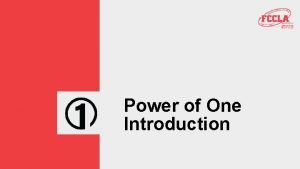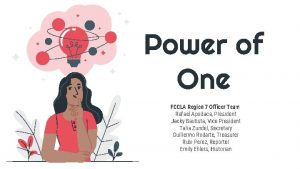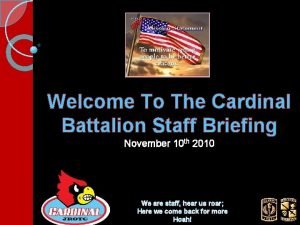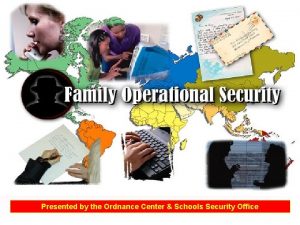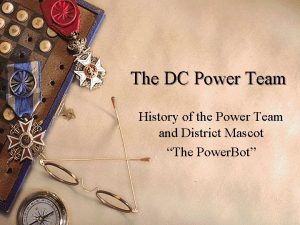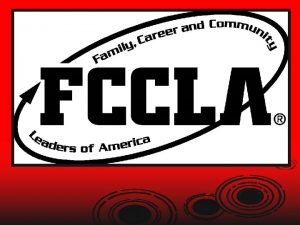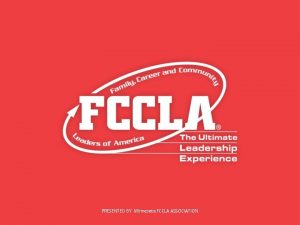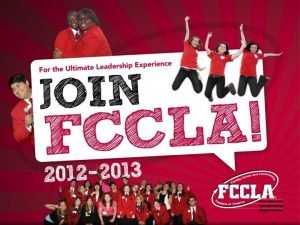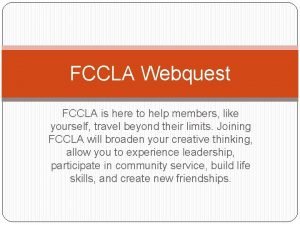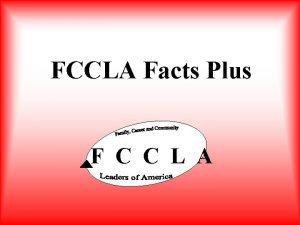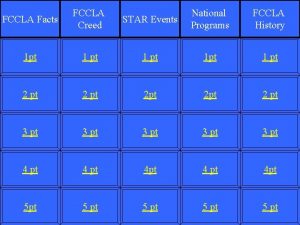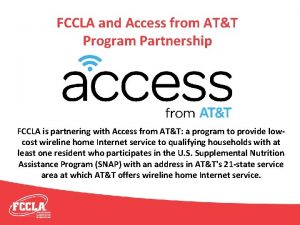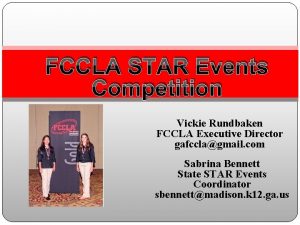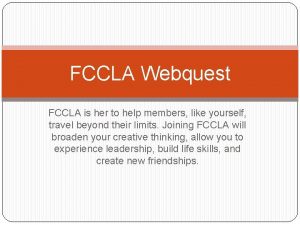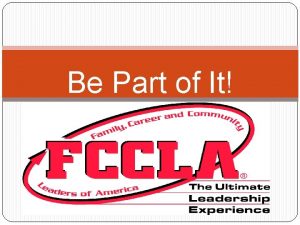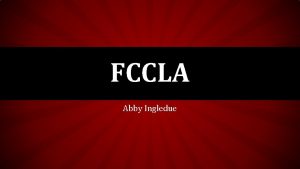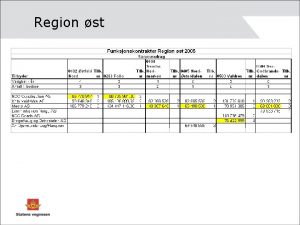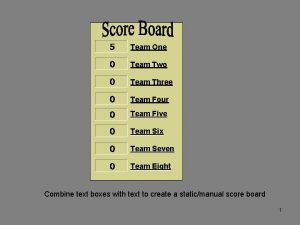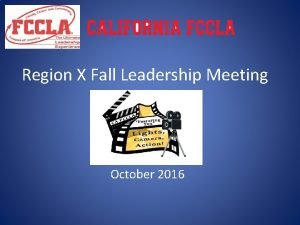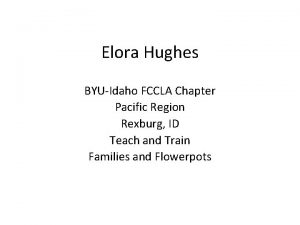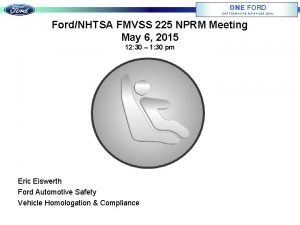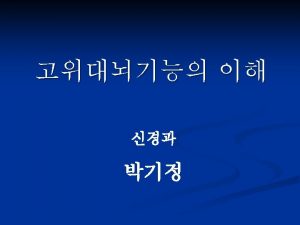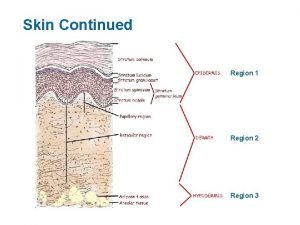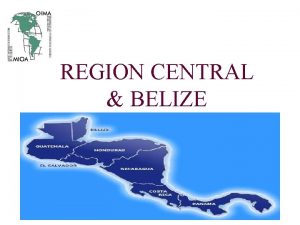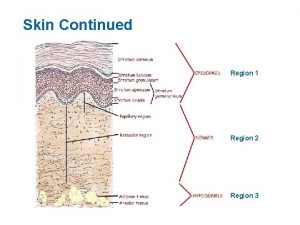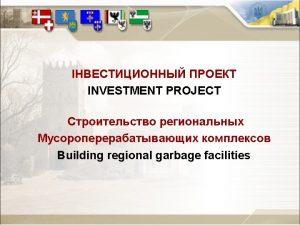Power of One FCCLA Region 7 Officer Team





























- Slides: 29

Power of One FCCLA Region 7 Officer Team Rafael Apodaca, President Jacky Bautista, Vice President Talia Zundel, Secretary Guillermo Rodarte, Treasurer Rubi Perez, Reporter Emily Ehlers, Historian

Family Ties 01 A Better You 02 Take the Lead 03 Working on Working 04 05 Speak Out for FCCLA

SMART Goals - How to use SMART Goals Specific - What exactly do I want to achieve? Measurable - How will I know if I’m successful? Achievable - Can this actually be done? Relevant Time bound - Do I have the ability to achieve it? When do I want to achieve this by?

01 A Better You Improve Personal Traits

Goals & Objectives: Reflect & Remind - To help yourself become a better person reflect on yourself. This includes your flaws and mistakes. Focus on what changes you need to make for yourself to become a better person. Focus - Try to keep yourself focused on what you want for yourself to become better and remind yourself to do your best and don’t give up on what you want. Find Yourself - Take time to find yourself and think about what you like about yourself and what you can improve to become a better you!

List of Goals to Pursue ● Eating Nutritiously ● Learning a new skill or hobby ● Decreasing Stress ● Being more responsible ● Getting along with others ● Seeking help for personal ● Making friends ● Managing Money ● Working to control anger ● Saving money for an activity or ● Using social media in a more ● school activities challenges and problems college ● Improving study habits and grades ● Watching less television ● Reading more for fun ● Organizing room, schedule or locker Becoming more involved in positive manner ● Decreasing leisure time on the internet

02 Family Ties Get Along Better with Family Members

Four Forms of Communication Facial expressions, body language, dress, scent. Verbal Face-to-face, TV, Radio, telephone, and other media. Nonverbal Maps, logos, charts, graphs Written Pen and paper, email, social media, magazines, books, text messaging, the internet Visual

Three Parts of Communication Sender - Encodes a message verbally and nonverbally or in writing or graphics. Message - What is actually communicated; May be effective or ineffective. Receiver - Responsible for decoding the sender’s message; May interpret the message differently than the sender

Overcoming Barriers of Communication 1. Practice Active Listening a. ▪Maintain eye contact b. ▪Paraphrase a message to the sender to 2. ensure understanding c. ▪Ask questions d. ▪Be present Change Your Mindset a. “Most people do not listen with the intent to understand, they listen with the intent to reply. ” - Stephen R. Covey b. Stop thinking “I must defend my position, ” “don’t have time to listen to everything you say, ” “I need an entrance into the conversation, or “I know what you’re going to say, ” which demonstrates the purpose of replying instead of listening. 03. Consider the other person’s perspective a. How would the other person perceive your words, nonverbal communication, or text or graphic? What is your audience’s background? 04. Use “I” messages allow a sender to express strong emotions without attacking the receiver. “You constantly interrupt me!” vs. “It makes me upset when I am not allowed to finish my sentence. ”

Kahoot Link:

03 Working on Working Explore work options, prepare for a career, or sharpen skills useful in business.

The True Colors Assessment. The True Colors assessment helps members learn more about each other by answering a group of questions with numbers 1 -4. The number 1 represents that it is unlike you, while the number 4 represents that it is the most like you. Doing this test helps members realize both their strengths and weaknesses, which will lead to them finding better methods of collaborating with others

The True Colors Assessment - Emotionally driven, seeks harmony in groups, enthusiastic, creative and empathetic. Loyalty driven, respects rules and authority, responsible, organized, and appreciative. Short-term driven, welcomes change and variety, adventurous, competitive, impulsive. Logically driven, independent thinker, focused, efficient, and analytical.

Working on Working Skills The Working on Working Unit also helps members develop skills for becoming a wage earner. For this project you have to choose which real world skill you would need the most for your future career, brainstorm ideas on how you would set a SMART goal in order to complete the project. Top 10 Skills in 2020: 1. Complex Problem Solving 2. Critical Thinking 3. Creativity 4. People Management 5. Coordinating with Others 6. Emotional Intelligence 7. Judgement and Decision Making 8. Service Orientation 9. Negotiation 10. Cognitive Flexibility

The True Color Assessment Survey LInk

04 Take the Lead Develop Leadership Qualities

Servant Leadership The Taking the Lead Unit focuses on improving one’s leadership skills and abilities. To develop these skills, we first must understand what it means to be a leader, specifically servant leadership. This represents leading by example through serving the needs of a team or group before serving the needs of oneself.

What Matters Most

List of Topics to Pursue Leadership does not require anyone to have a title or position, rather the initiative to take action. By finding a topic, such as the ones below, you can use the FCCLA Planning Process from to take the lead. Use a SMART goal to follow through. ● ● ● Volunteering Resisting Negative Peer Pressure Teaching someone a specific skill Teaching Children Practicing Assertiveness Leading a Small Group

05 Speak Out for FCCLA Tell Others About Positive Experiences In FCCLA

Critical Thinking Intellectually disciplined process of actively and skillfully conceptualizing, applying, analyzing, synthesizing, and/or evaluating information gathered from, or generated by, observation, experience, reflection, reasoning, or communication, as a guide to belief and action.

Step 1: Knowledge Critical Thinking Steps 1 - 3 ● Identify issues ● Ask questions Step 2: Comprehension ● Gather information about the issue ● Find data to extend your thinking Step 3: Application ● Find the link between the information found and the resources available to solve the problem. ● Reflect to determine if your biases are impacting your information

Step 4: Analyze ● Critical Thinking Steps 4 -6 Analyze the situation to determine the weak and strong points in the situation and obstacles to overcome ● Prioritize issues at hand to solve Step 5: Synthesis ● After analysis your decision should be formed ● Decide how to best carry out your solution based off of priorities ● Determine the best solution if there are options Step 6: Take action ● Carry out your action plan based on your gathered information, priorities, and unbiased decision

Additional Resources to help you succeed - ● FCCLA Planning Process Sheet ● FCCLA Power of One Recognition ● Power of One Program Guide for Advisors

FCCLA Planning Process Sheet You can use this pdf fillable planning sheet to identify a concern, set a goal, form a plan, act, and follow up.

FCCLA Power of One Recognition Use this form to apply for state and national recognition when you have completed all five Power of One Units. Print or type all information. Attach the completed form for each member, in the portal, when submitting (checking off) members names for national recognition.

Power of One Program Guide for Advisers The Power of One Program Guide has all of the worksheets and activities your adviser would need for students to complete each unit in the program.

Thank you so much for your attention! Enjoy using the Power of One.
 Describe power of one fccla
Describe power of one fccla Power of one fccla
Power of one fccla One ford
One ford Drill team officer binder
Drill team officer binder One team one mission
One team one mission One team one dream artinya
One team one dream artinya Pgcps coherence framework
Pgcps coherence framework The real lesson 21
The real lesson 21 Rhomboideus minor
Rhomboideus minor Active region and saturation region
Active region and saturation region Going native project management
Going native project management Team spirit becomes team infatuation
Team spirit becomes team infatuation The white team cheers for the blue team, just like
The white team cheers for the blue team, just like One god one empire one religion
One god one empire one religion Little dog run
Little dog run One king one law one faith
One king one law one faith One empire one god one emperor
One empire one god one emperor See one do one teach one
See one do one teach one See one, do one, teach one
See one, do one, teach one One face one voice one habit and two persons
One face one voice one habit and two persons See one do one teach one
See one do one teach one One vision one identity one community
One vision one identity one community Graphic organizer with the aims of la liga filipina
Graphic organizer with the aims of la liga filipina U power team
U power team Fccla dress code
Fccla dress code Minnesota fccla
Minnesota fccla Fccla definition
Fccla definition Fccla mission
Fccla mission Fccla
Fccla What does facts stand for in fccla
What does facts stand for in fccla
